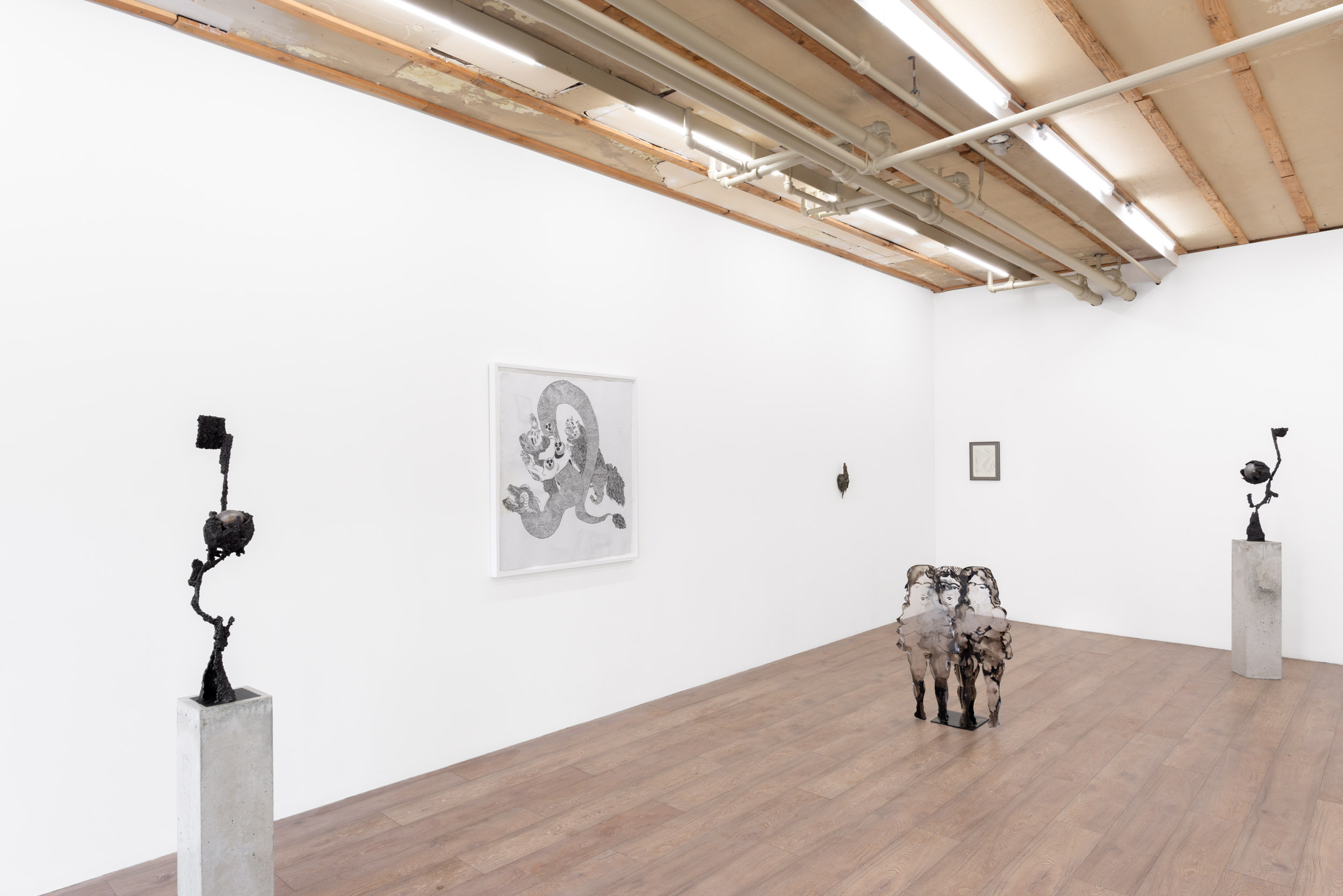
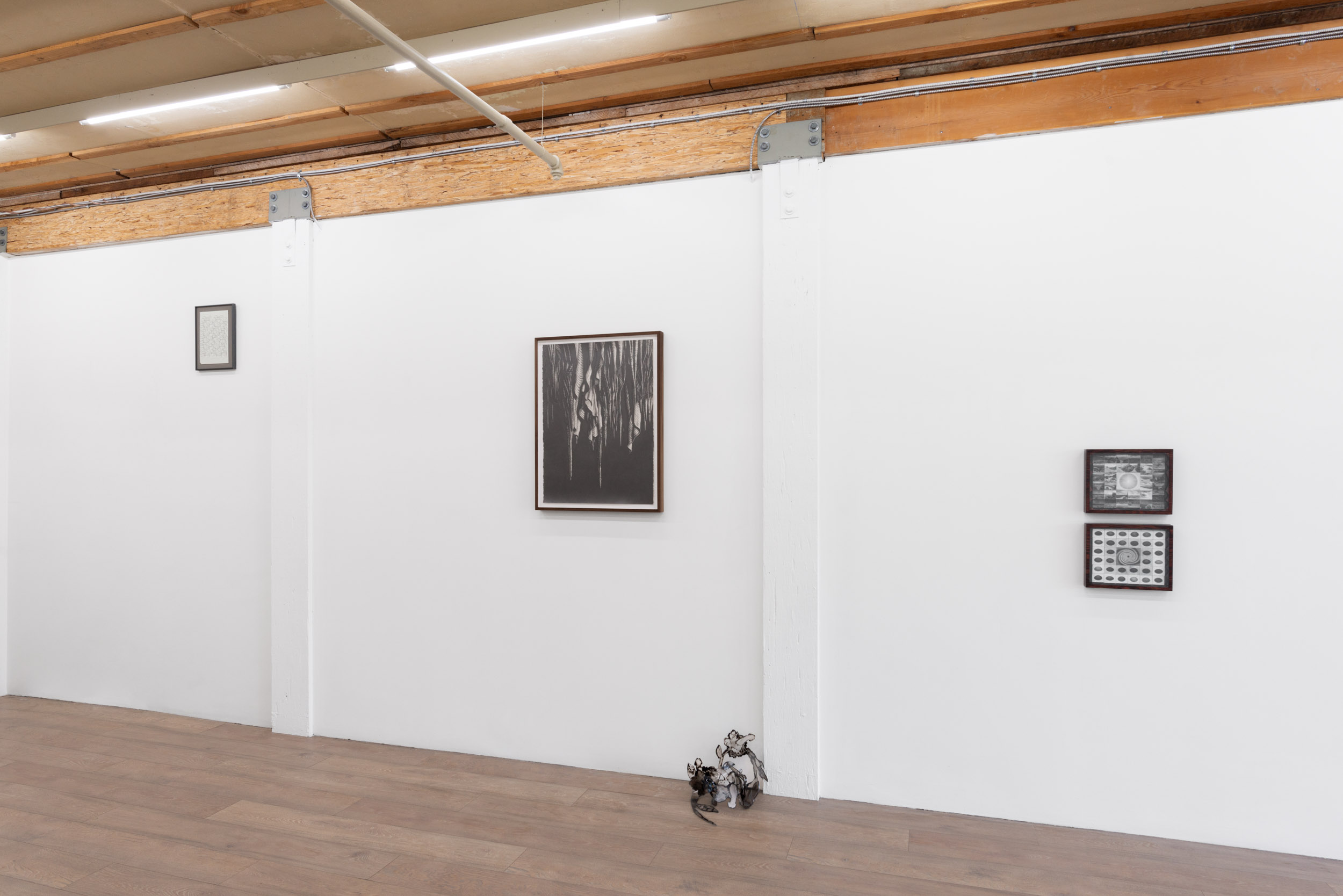
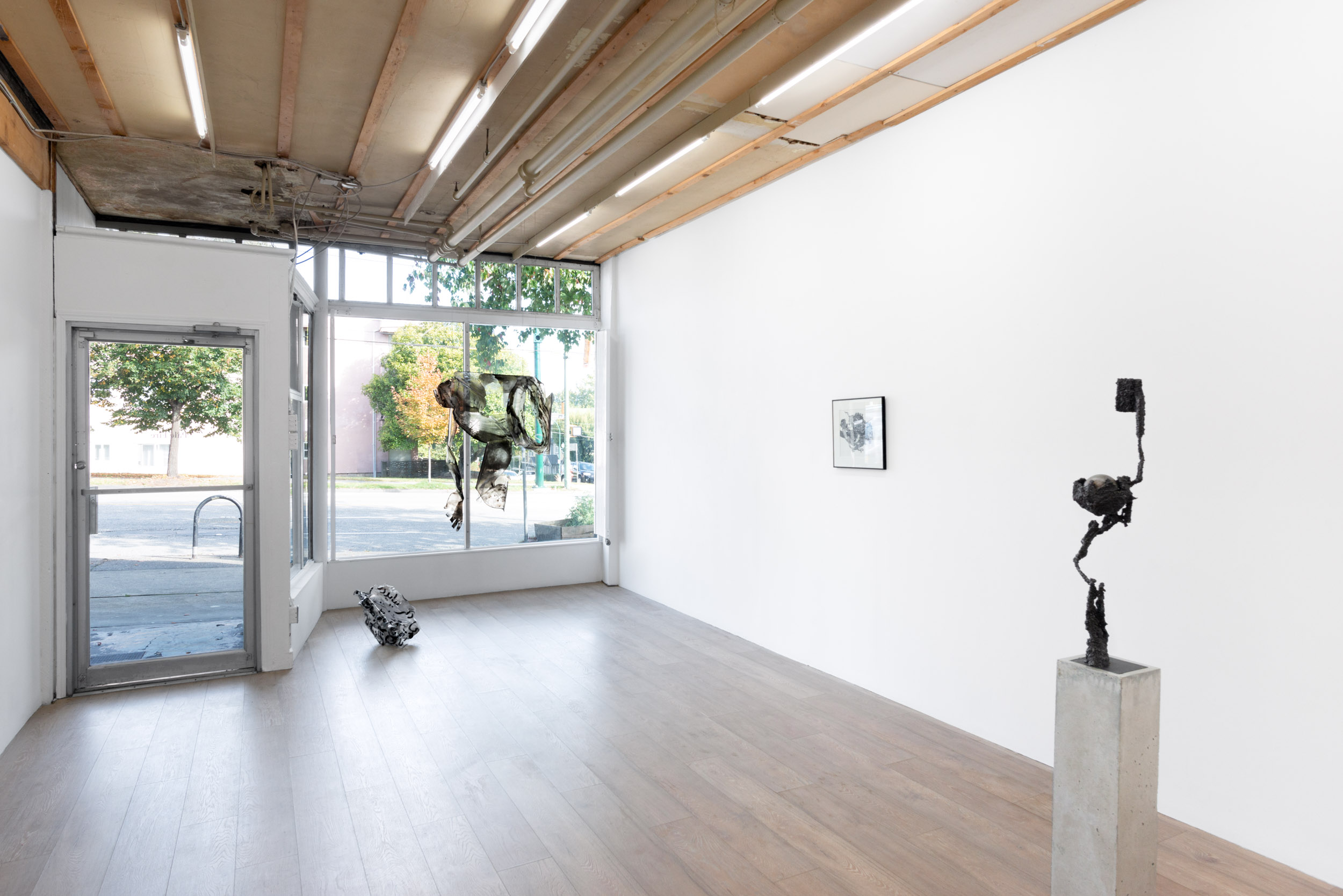
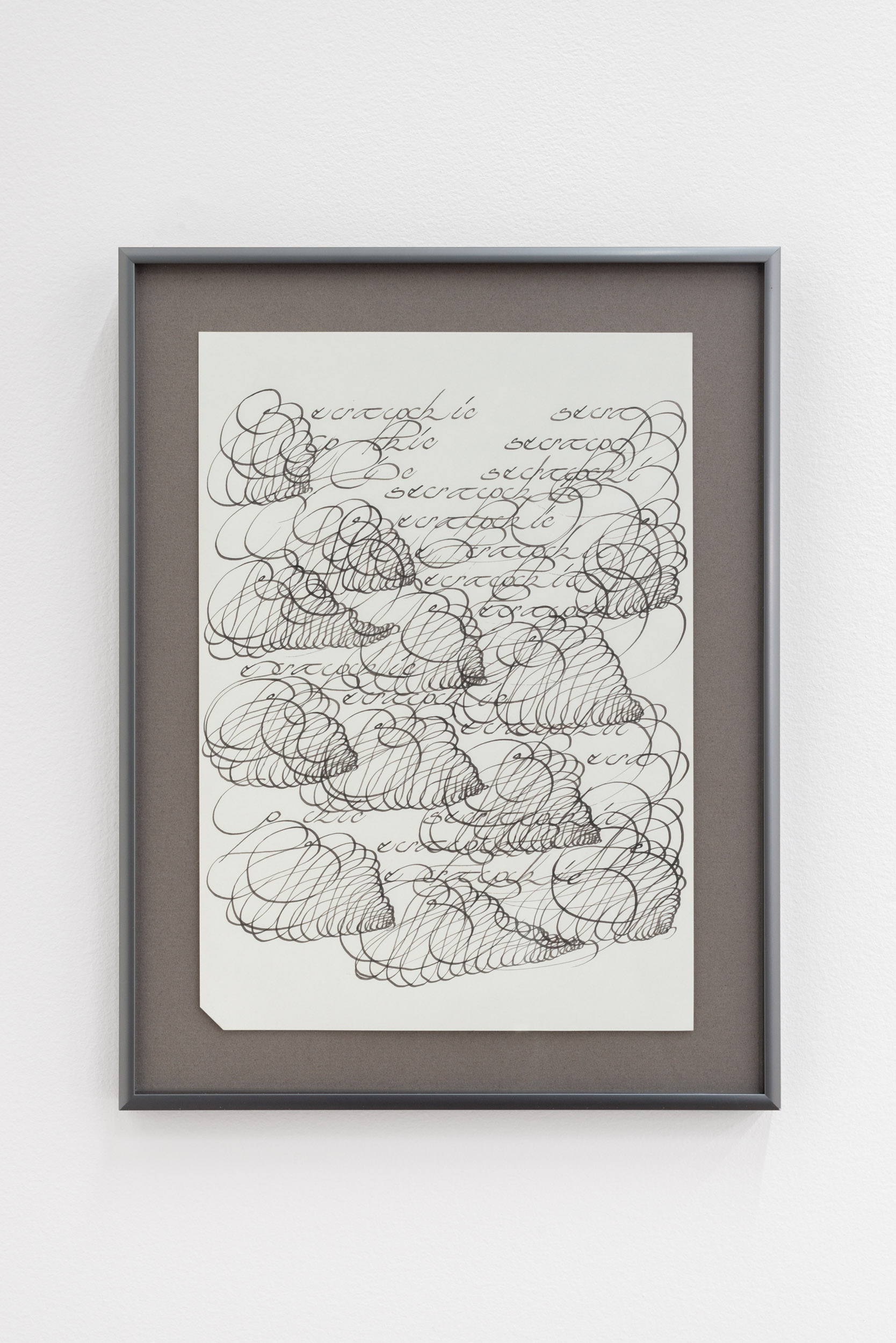
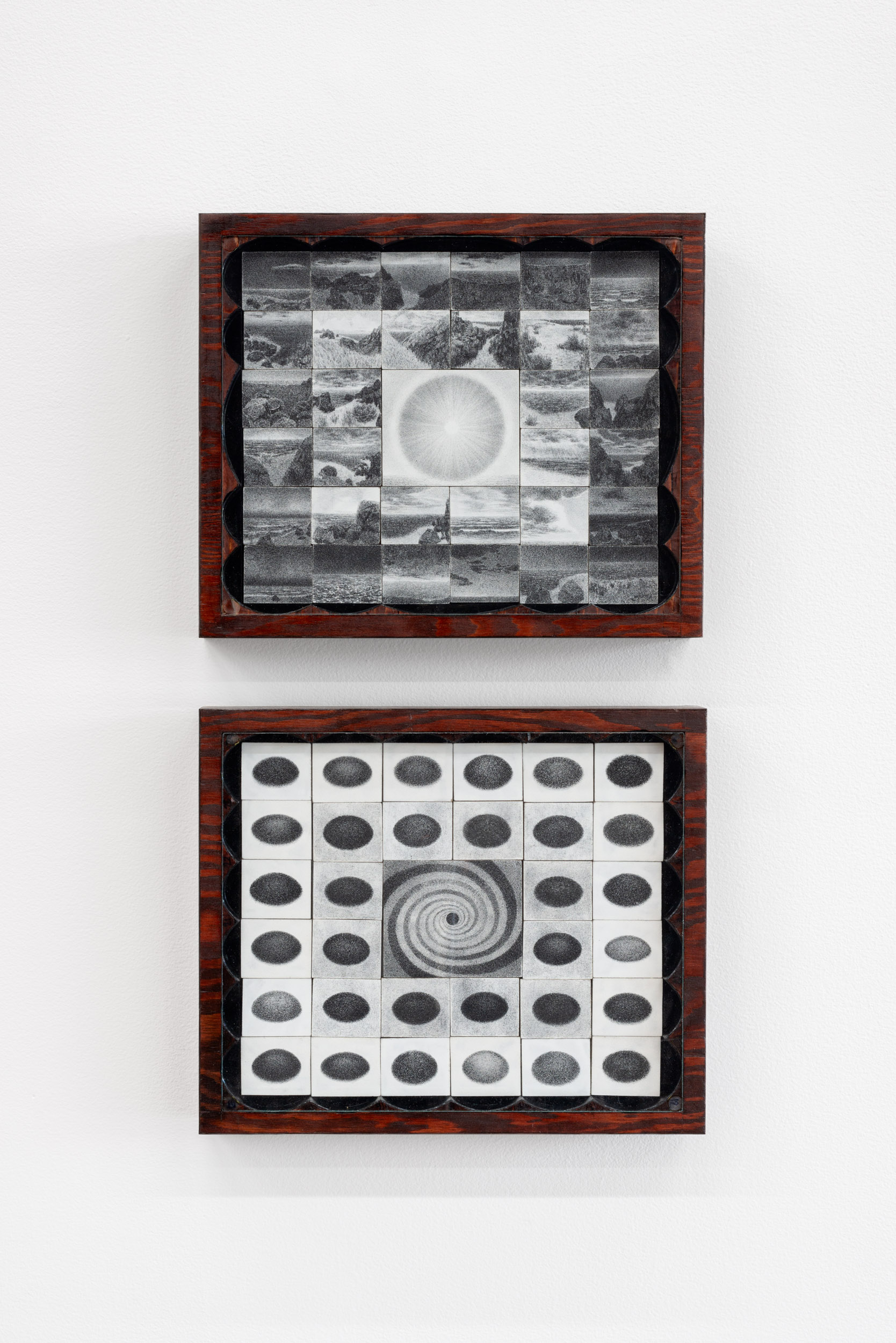
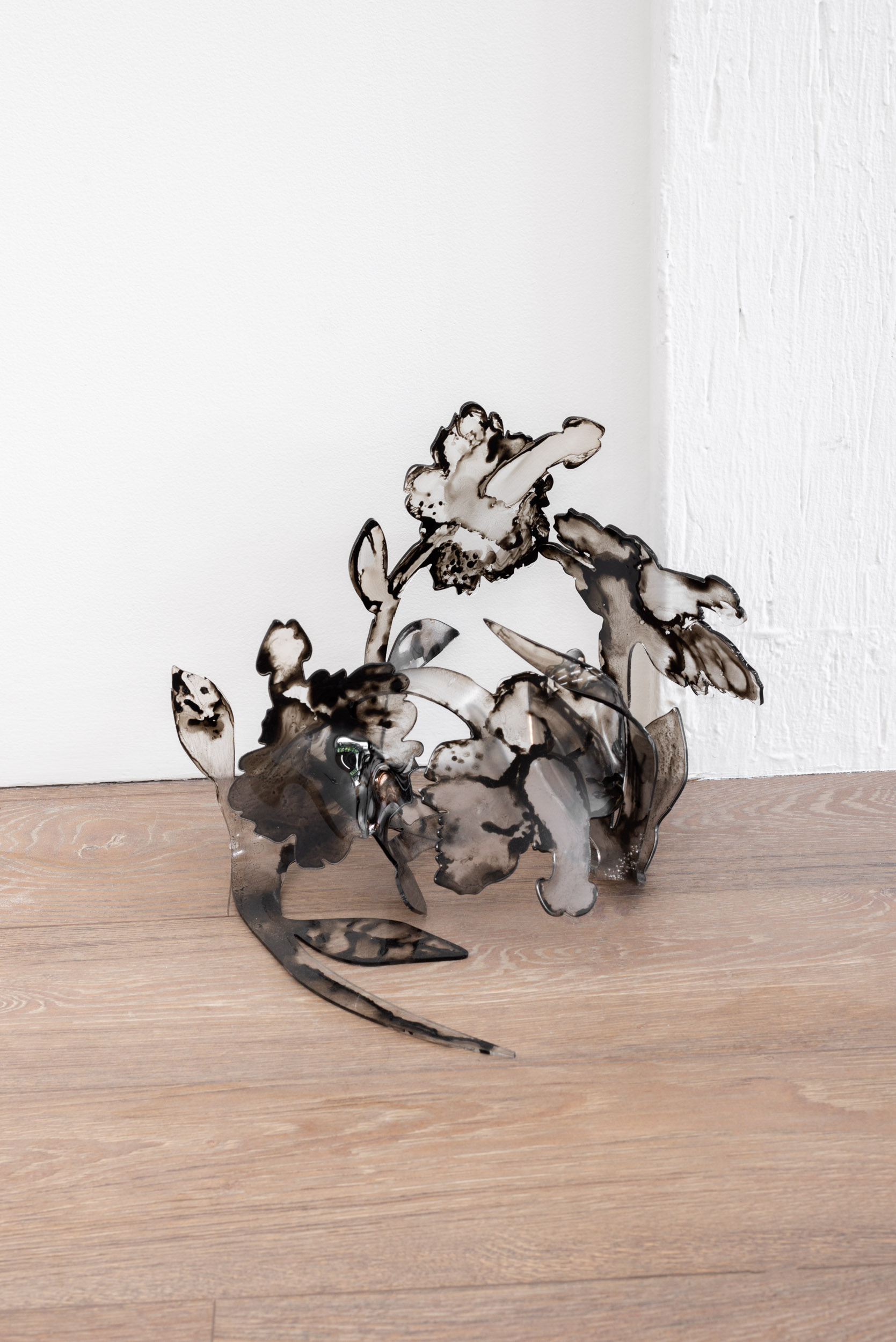
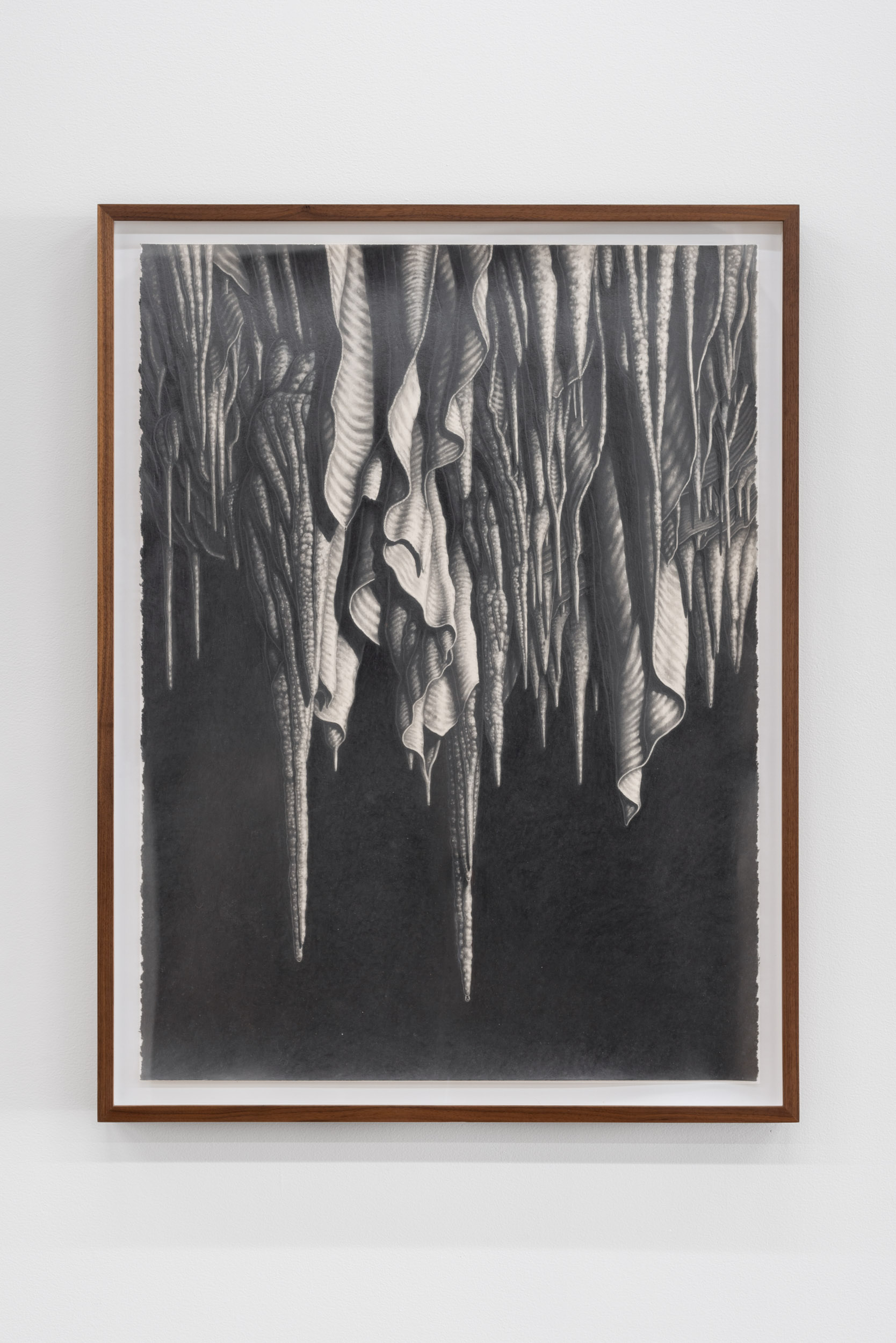
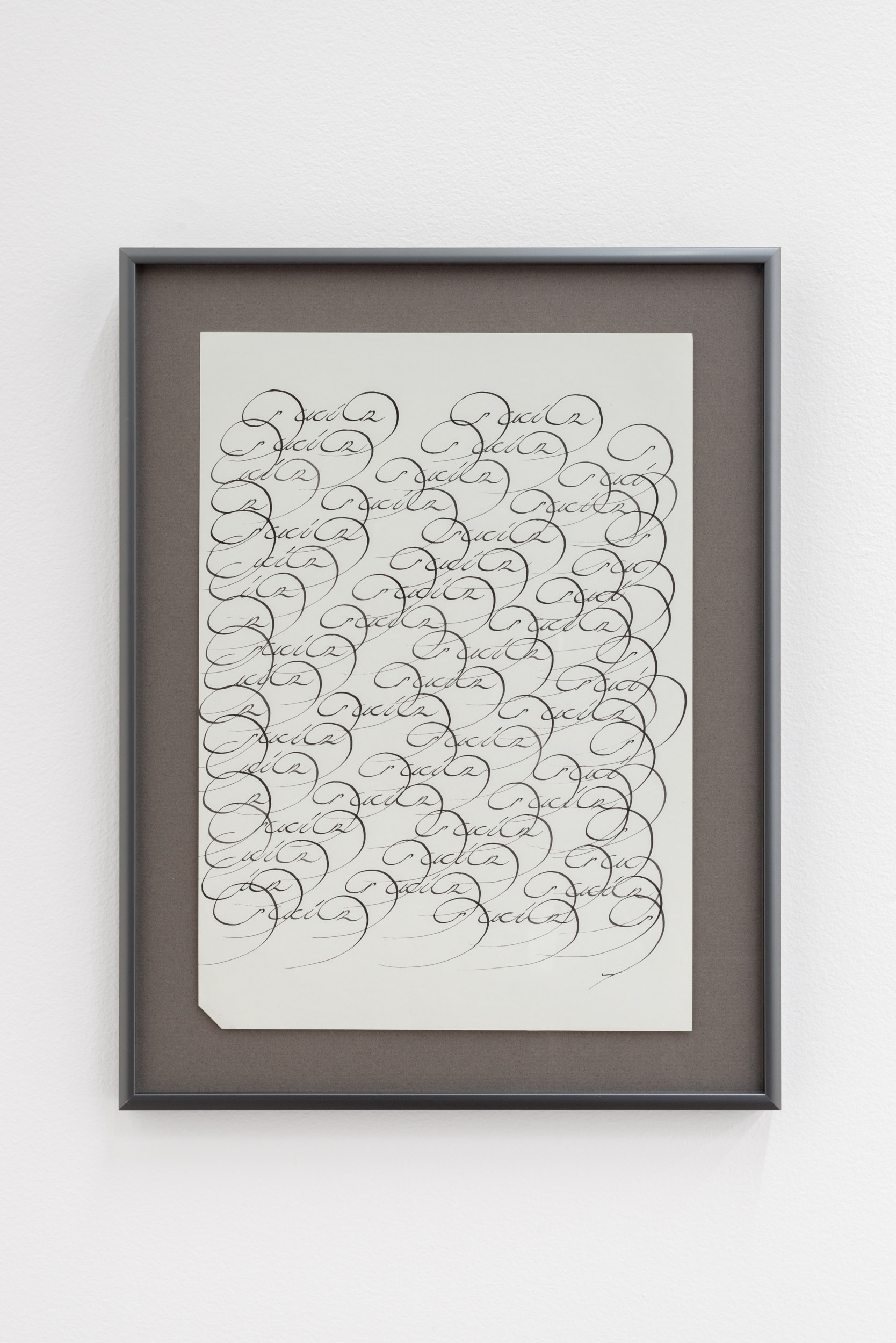
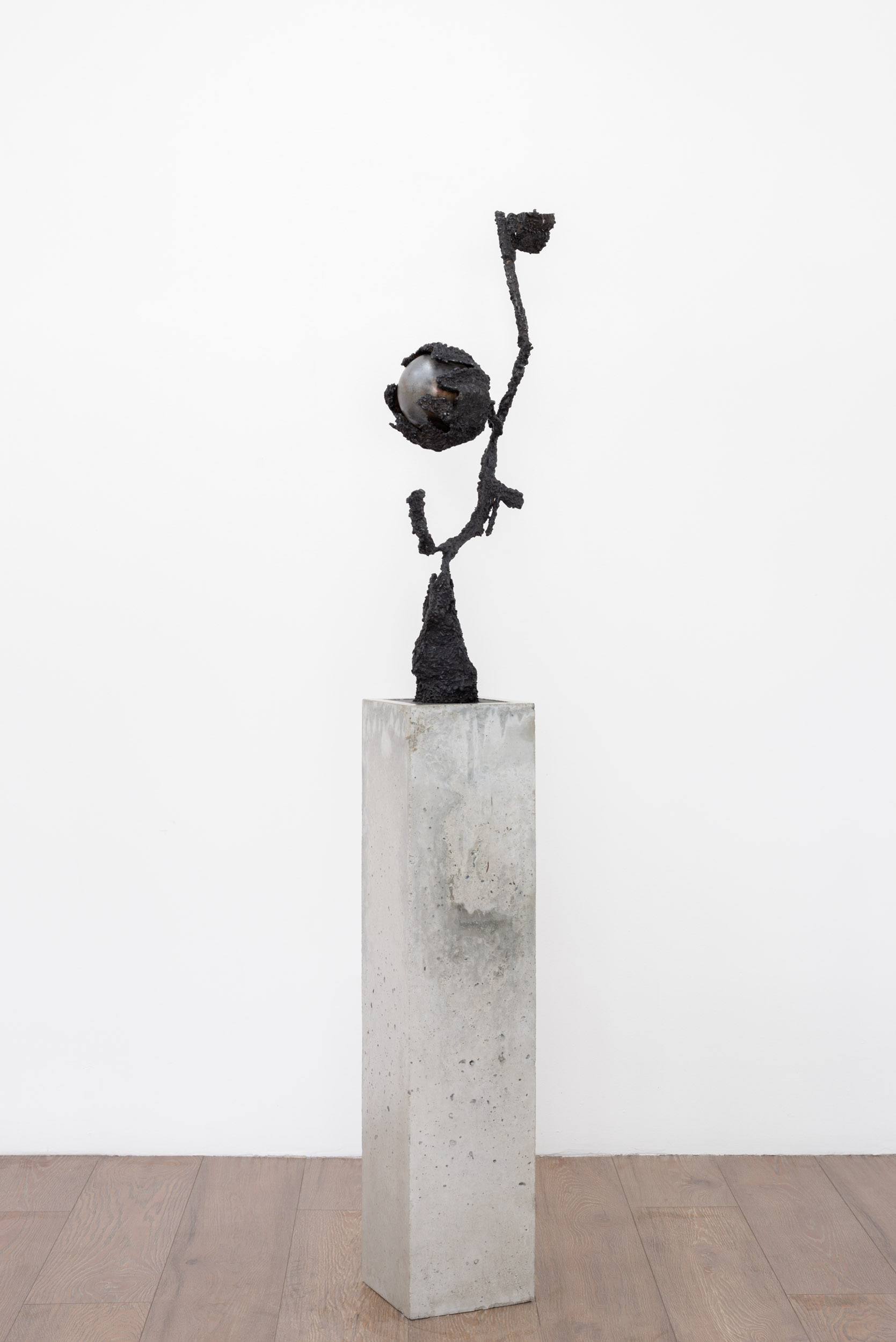
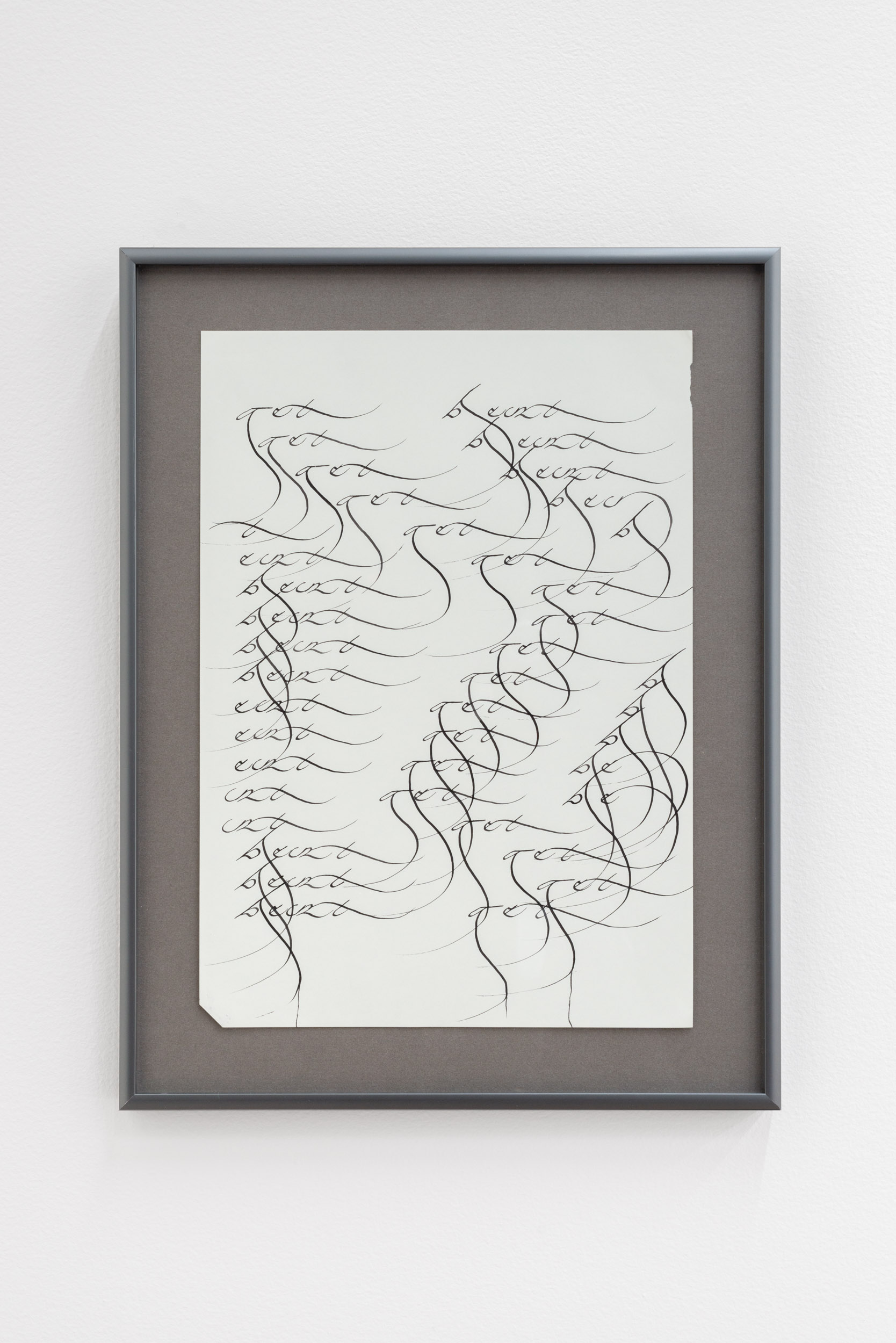
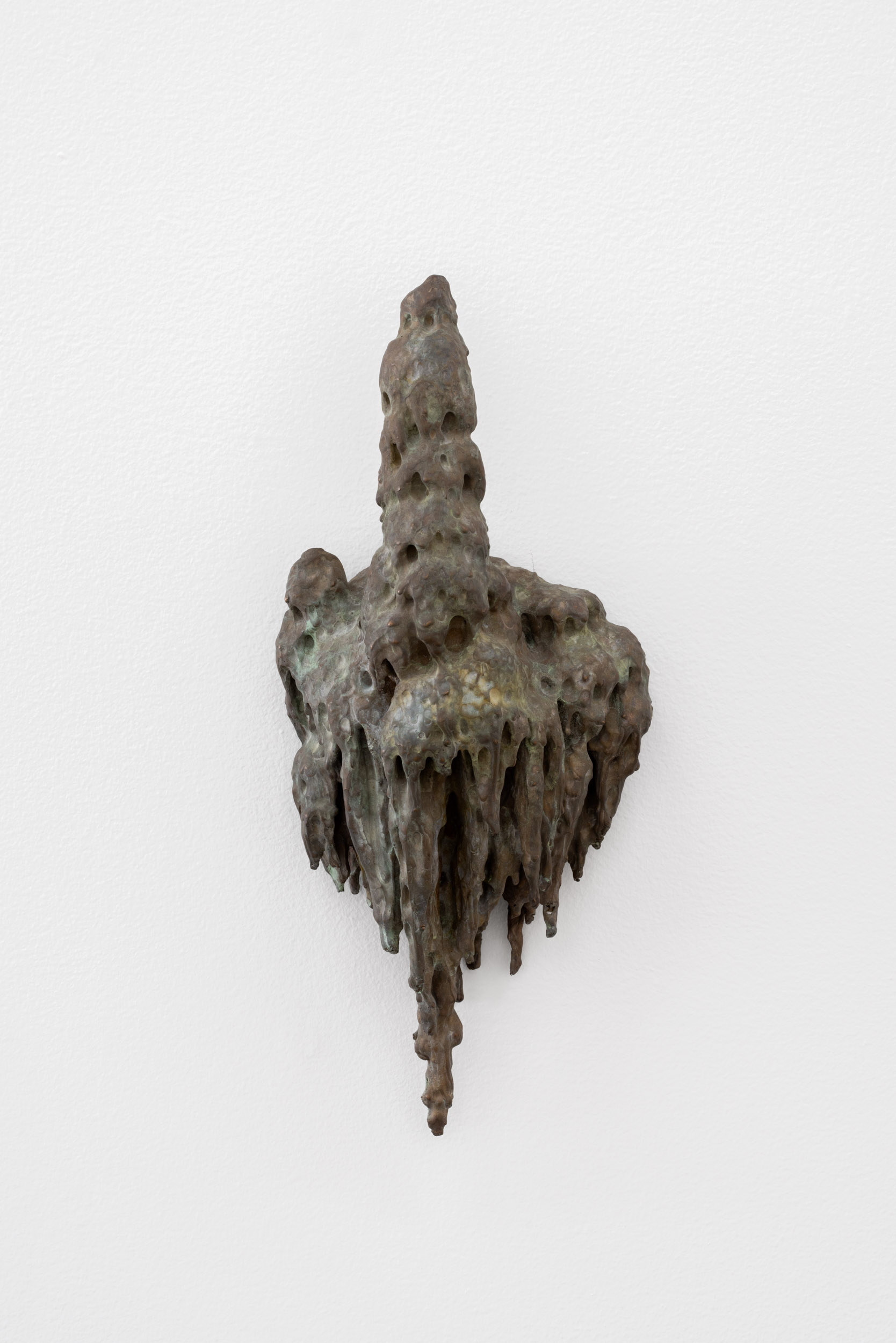
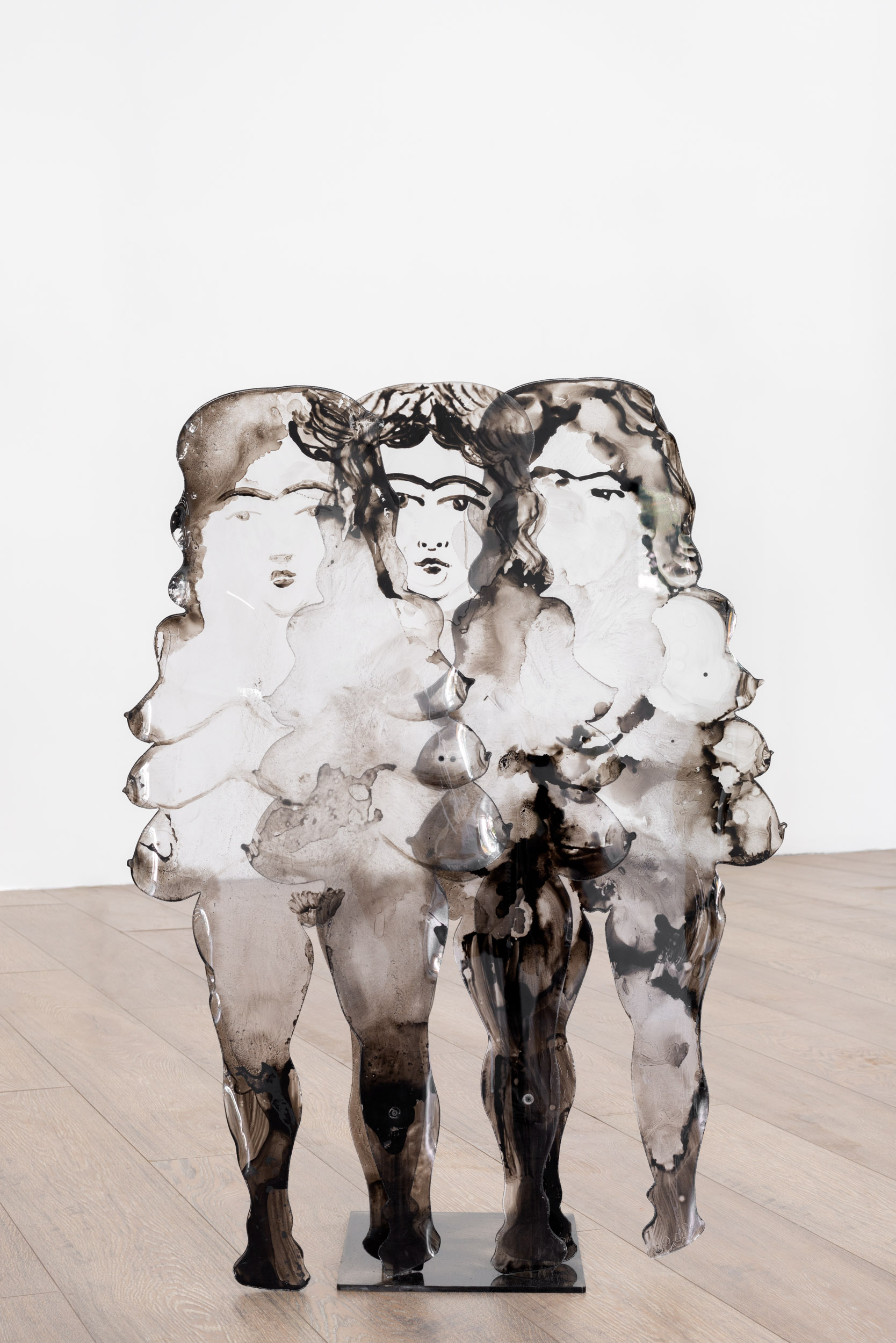
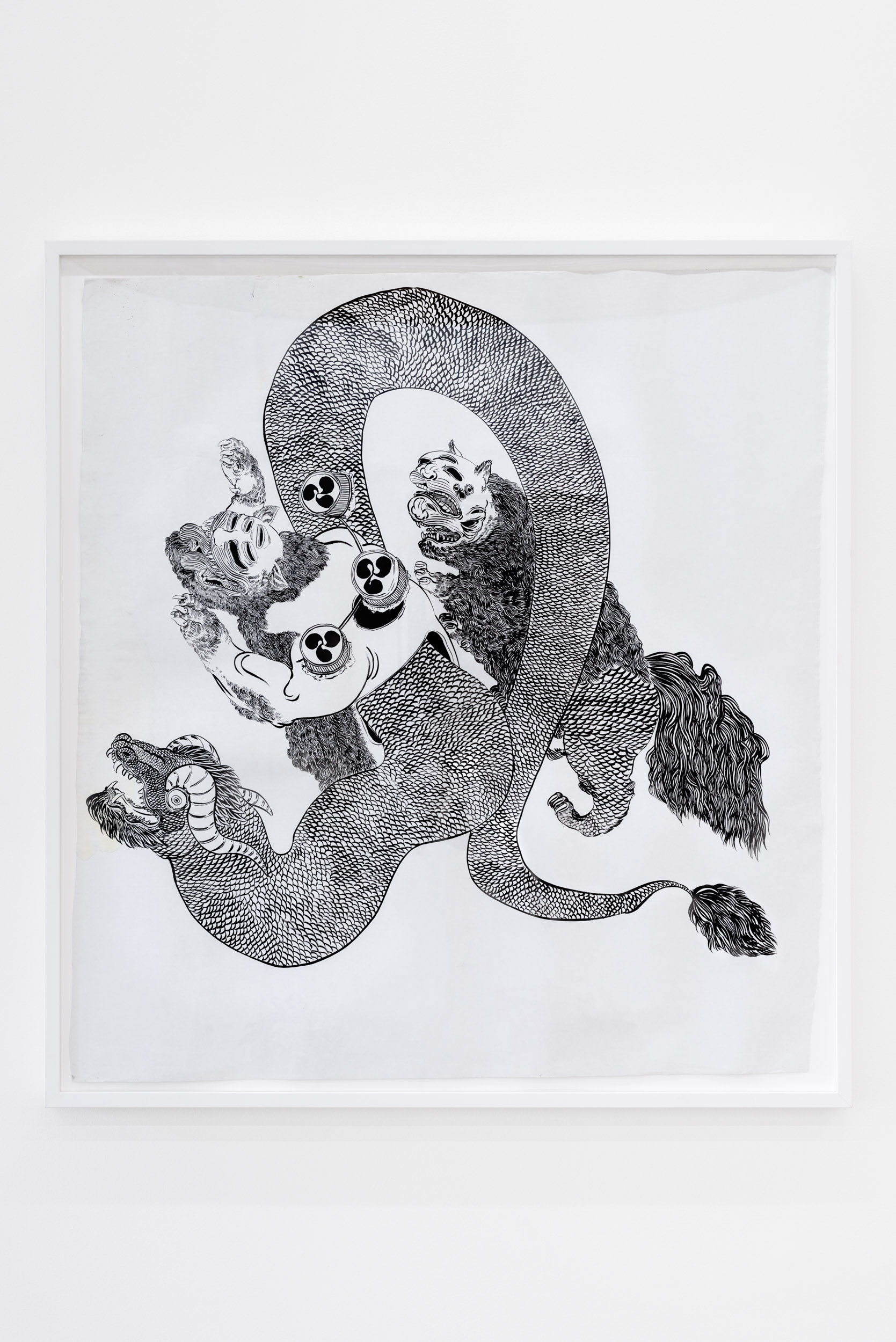
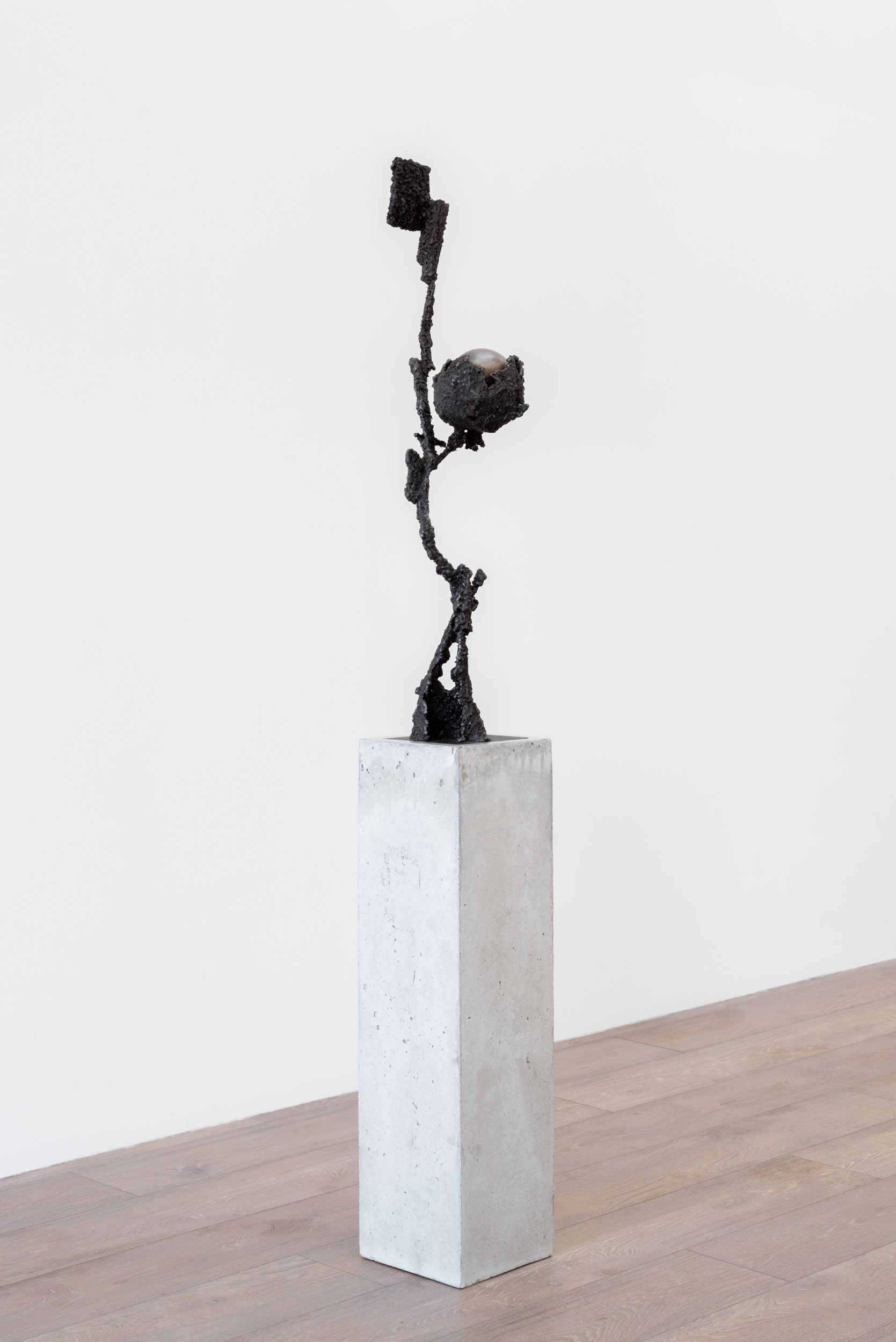
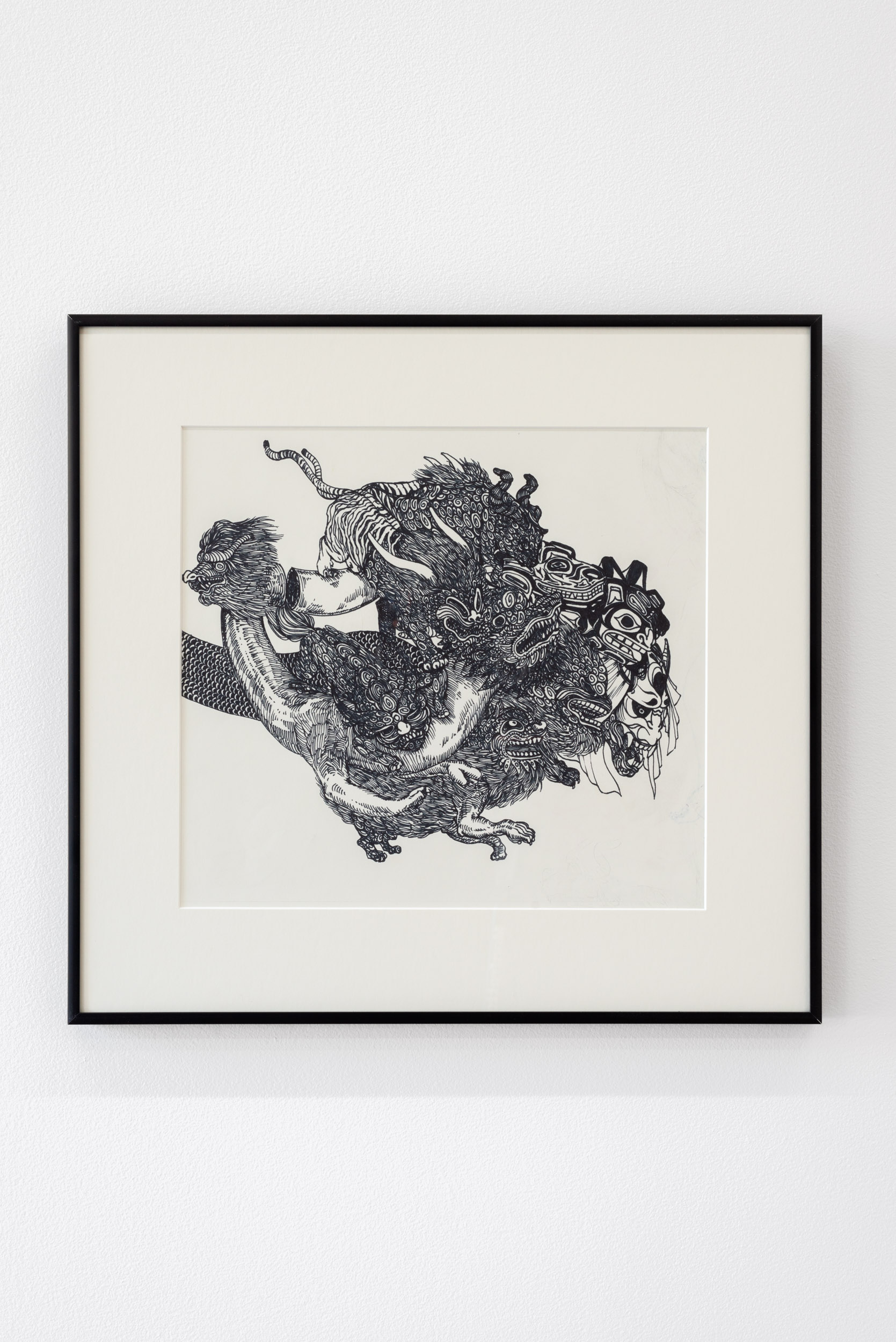
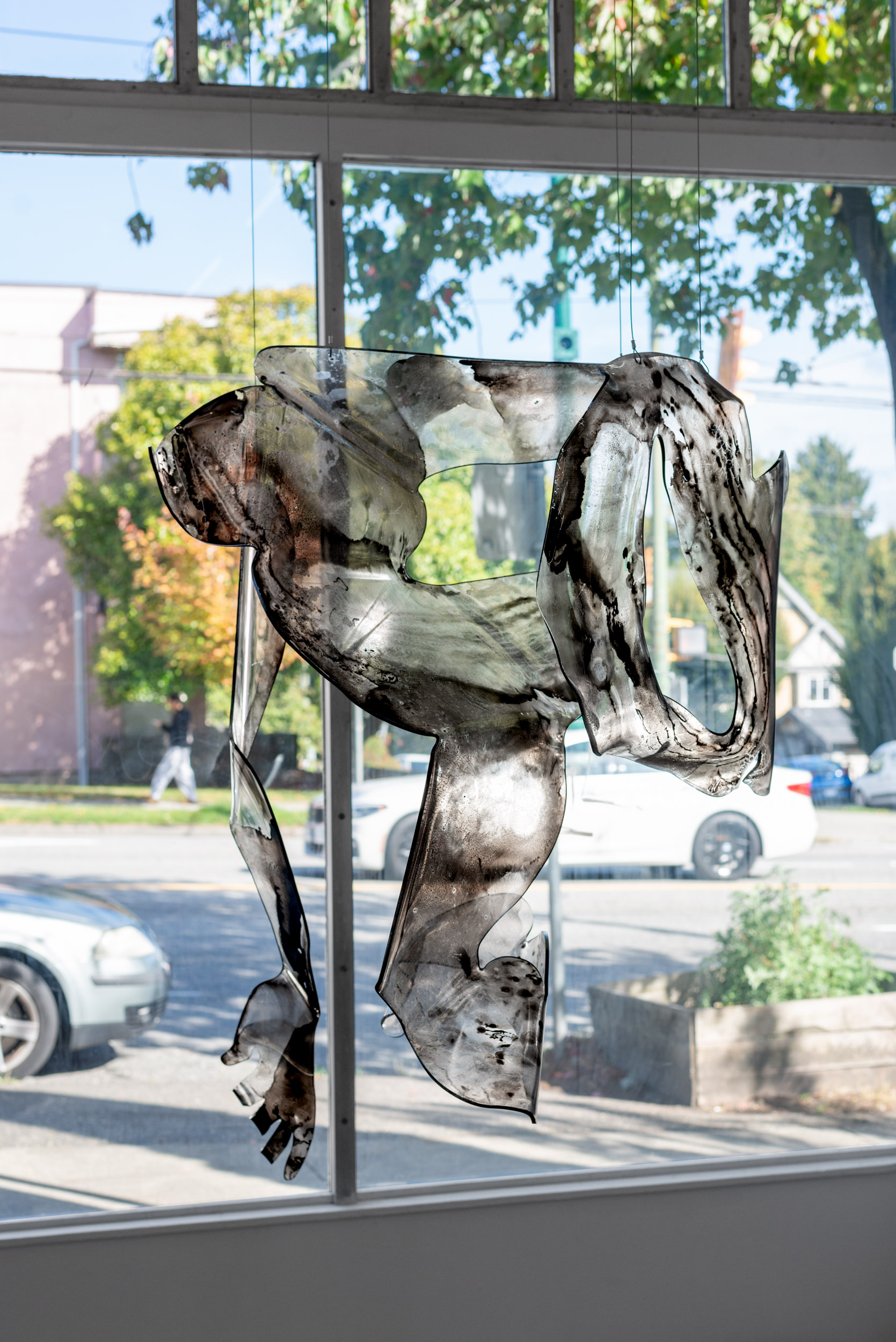
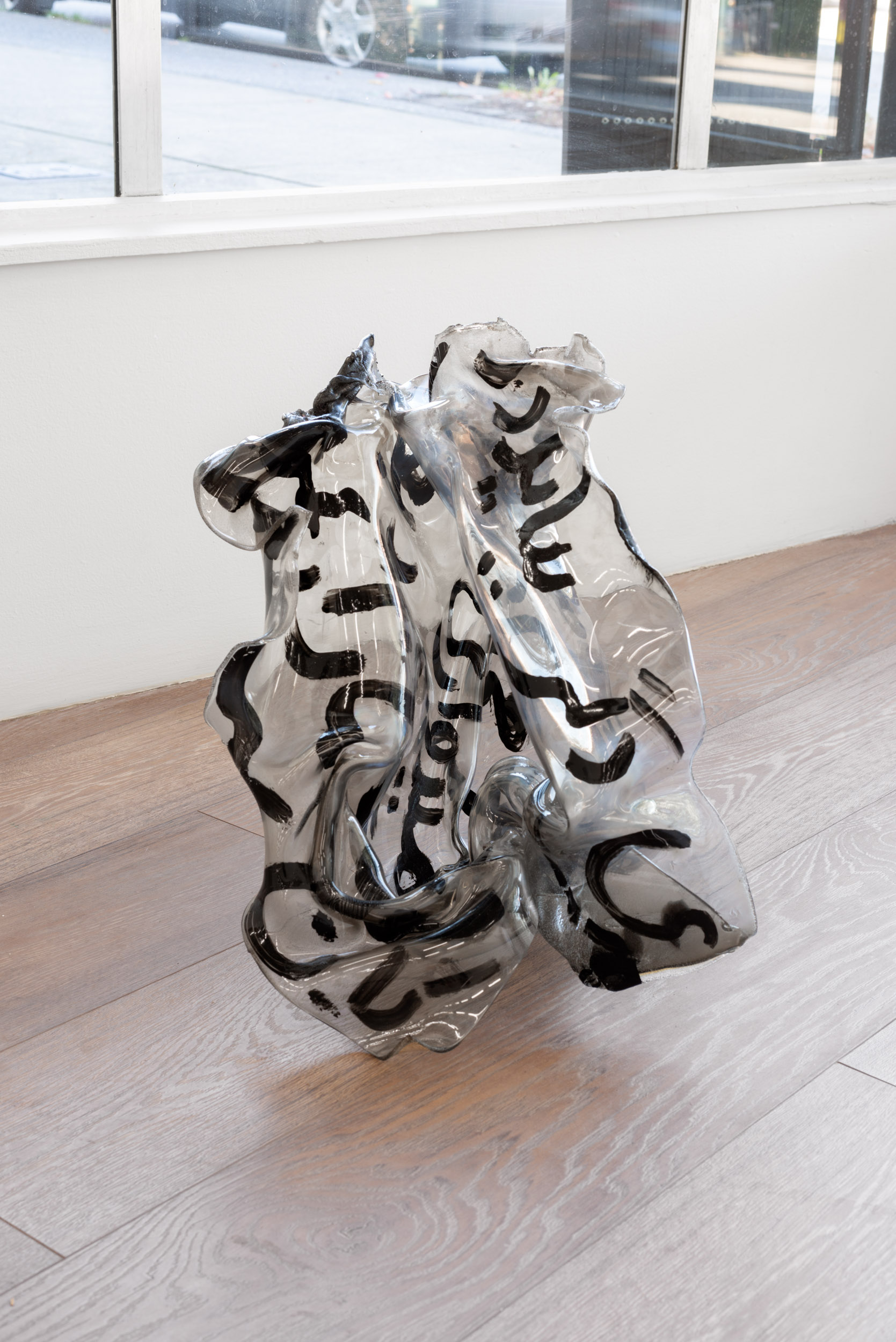
Nocturne
Shayne Weston Abbott-Arcan, Mahsa Farzi, Marcel Lessard, Evan McGraw, Ronan Stewart & Sean Jena Taal
September 25–November 22, 2025 *Extended Dates
ARTIST TALK
Mahsa Farzi & Marina Roy
Thursday October 30, 7PM
ARTIST TALK
Evan McGraw & Amy Kazymerchyk
Friday November 14, 7PM
Viewing Room
The nights are getting longer. Quickly. Following the autumn equinox, the moon feels more productive than the sun, offering matter an opportunity to rest, decompose and regenerate in the cool, damp darkness. The song of the season is slow and quiet, with a whisper of melancholy and eros. Opening in the season’s waning light, Nocturne presents work that harnesses this energy. In the artists’ practices, decay is a fertile process.
In his drawing and sculpture works, Sean Jena Taal engages with processes of slow accumulation. He made Drapery (2025) by building up layers of graphite to create dense metallic shadows, and Bridal Veil (2023) by slowly pouring then redacting a wax mould to cast in bronze. These gestures mimic the growth of calcite formations in caves, which require the convergence of specific geological and weather conditions over millennia. Caves have also been significant sites for the evolution of human perception, consciousness and culture. Both phenomena inform Taal’s inquiry into “psycho-karstology.”
Ronan Stewart also approaches steel with patience, inviting time itself to be a material in his process. His sculptures emerge one bead of molten MIG wire at a time. They accumulate like wax into forms that resemble the slow rise of stalagmites. These fragments are pruned and sutured together to form figures that echo the fragile posture of withering plants. In Stewart’s Husk (2025) series, the stability of steel confronts the ephemerality of flora, presenting an arrested encounter between what endures and what fades.
Mahsa Farzi is motivated by the liberatory potential of de-creation. Her installation Untamed (2025) draws together images and text from Persian miniature painting, folklore and literature. Farzi cuts limbs, orifices, sexual organs and flowers out of acrylic panels, to which she applies diluted metal paint which shocks the plastic, creating an etched and stained effect. She then works with a high-temperature propane torch that distorts and deforms the figures. Farzi’s process materializes the disorientation of cultural and ideological alienation, which slowly renders the world fragmented and unfamiliar. In her work, she explores the potential for release and renewal that this psychic and social erosion offers.
Evan McGraw’s calligraphic work is a ritual of precision and calculated experimentation. He plays with the visual and syllabic form of single words and short expressions in ways that unravel their legibility. Through repetition, letters drift, float, coil and dissolve. Ruin, Seraphic and Get Bent (2025) convey unique energetic states, expressing elegance, destruction and refusal. Repeating each word vocally is a form of incantation that both summons their energy and diffuses it.
Marcel Lessard also works with repetition. His graphite mosaics 1.31 (1 & 2) (2024) present iterations of two environments: the shoreline and an abstraction of space. He develops the compositions sequentially from the outside in, and each unit is a unique drawing that builds off of elements in the previous one. Lessard is interested in these two geographies as physical and psychological boundaries. He is curious about how the perception of each space is altered through reduction and reoccurrence.
In Shayne Weston Abbott-Arcan’s portfolio of sketches and drawings, the phenomenon of transfiguration frequently rears its head. Bodies of real and imagined animals are hyphenated or morph into one another. Some beings have anthropomorphic features, while others express qualities of a more-than-human spirit. For Abbott-Arcan, drawing was a means of wandering through his emotional and sensual experience of the world. He wasn’t afraid to explore the darkest corners of his encounters. In them, he often found a stray thread that led back to the light.
BIOS
Mahsa Farzi (b. 1992, Tehran, Iran) works across painting, drawing and sculpture. She examines how censorship, migration and patriarchy fracture continuity, giving rise to a language of disruption in which humour is inseparable from survival. Within this language, grief and resilience are coexisting conditions that she explores through material processes. Farzi’s work has been shown at THIS Gallery in Vancouver, BC (2025); Morris and Helen Belkin Art Gallery in Vancouver, BC (2025); and A+ in Beirut, Lebanon (2018). She has been recognized with the Joan Wright Hassell Prize in Visual Arts (2024) and holds an MFA from the University of British Columbia, Vancouver (2025).
Marcel Lessard (b. 1992, Vancouver, Canada) is a visual artist who primarily uses graphite as a drawing tool. He is interested in images as pictograms and how repetition and structural arrangement affects perception and interpretation. Lessard achieved a BFA from Emily Carr University of Art + Design, Vancouver, BC (2024).
Evan McGraw (b. 1990, Sechelt, Canada) is a visual artist who has had exhibitions at High Art in Paris, France (2025); Turley Gallery in Hudson, NY (2024); BIKINI in Basel, Switzerland (2018); Dem Passwords in Los Angeles, CA (2016); and Paul Kasmin in New York City, NY (2015). He completed a BFA at Cooper Union, New York City, NY (2015).
Ronan Stewart (b. 1989, Burlington, Canada) is an Irish Canadian artist living and working in Toronto. His multidisciplinary practice explores themes of labour, material memory and domestic infrastructure through sculptural and visual installations. Recent exhibitions include Cavity of a Husk at Hunt Gallery (2025), Worker’s Pantry at Crutch CAC (2019) and Mother’s Foundry at Birch Contemporary (2018), all in Toronto, ON. He obtained a BFA from Sheridan College in Oakville, Ontario (2014).
Sean Jena Taal (b. 1991, Calgary, Canada) explores the geological and phenomenological conditions of caves. He is interested in what life forms grow and survive in these hostile spaces, and what kinds of sentience may be looking back at us from their depths. He has attended the Banff Artist in Residence program at the Banff Centre for Arts and Creativity, AB (2023); the Gil Artist Residency in Akureyri, Iceland (2022); and the Association of Independent Colleges of Art and Design’s New York Studio Residency Program (2012). Solo exhibitions include, Shadow of the Hollow at Norberg Hall, Calgary, AB (2024); Witch’s Fingers at SAAG, Lethbridge, AB (2023); and Milk Stone at the Art Gallery of NWT, Yellowknife, NWT (2022). He is represented by Norberg Hall, Calgary, AB.
Shayne Weston Abbott-Arcan (b. 2000, Vancouver, Canada; d. 2025, Galiano Island, Canada) was a visual artist whose work moved fluidly between the comical and the surreal, the angelic and the macabre. He created fantastical worlds and dreamlike spaces filled with hybrid beings. He had a gift for making visible the contradictions and internal dramas of being human. As a displaced Indigenous person growing up far from his ancestral Plains Cree territory and culture, Abbott-Arcan also grappled with the deep impacts of colonization. His art became a space where those tensions could live and shift, and where imagination became a form of resistance and healing. Abbott-Arcan passed away suddenly and unexpectantly in February 2025. Later that spring, he was awarded his BFA from Emily Carr University of Art + Design, Vancouver, BC.